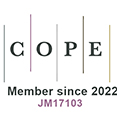REFERENCES
1. Luettel T, Himmelsbach M, Wuensche HJ. Autonomous ground vehicles—concepts and a path to the future. Proceedings of the IEEE 2012;100:1831-39.
2. Galceran E, Carreras M. A survey on coverage path planning for robotics. Rob Auton Syst 2013;61:1258-76.
3. Lowe DG. Distinctive image features from scale-invariant keypoints. Int J Comput Vis 2004;60:91-110.
4. Arel I, Rose DC, Karnowski TP. Deep machine learning-a new frontier in artificial intelligence research. IEEE Comput Intell Mag 2010;5:13-8.
5. Scheirer WJ, de Rezende Rocha A, Sapkota A, et al. Toward open set recognition. IEEE Trans Pattern Anal Mach Intell 2012;35:1757-72.
6. Ramos FT, Kumar S, Upcroft B, et al. A natural feature representation for unstructured environments. IEEE Trans Robot 2008;24:1329-40.
7. Lillywhite K, Lee DJ, Tippetts B, et al. A feature construction method for general object recognition. Pattern Recognition 2013;46:3300-14.
8. Chabini I, Lan S. Adaptation of the A* algorithm for the computation of fastest paths in deterministic discrete-time dynamic networks. IEEE trans Intell Transp Syst 2002;3:60-74.
10. Valencia R, Andrade-Cetto J. Mapping, planning and exploration with Pose SLAM. Berlin: Springer; 2018. pp. 60-84.
11. Wang X, Shi Y, Ding D, et al. Double global optimum genetic algorithm–particle swarm optimization-based welding robot path planning. Eng Optim 2016;48:299-316.
12. Jones M, Peet MM. A generalization of Bellman’s equation with application to path planning, obstacle avoidance and invariant set estimation. Automatica 2021;127:109510.
13. Rehman NU, Kumar K, Abro GeM. Implementation of an autonomous path plan-ning & obstacle avoidance UGV using SLAM. 2018 International Conference on Engineer-ing and Emerging Technologies (ICEET) 2018. pp. 1-5.
15. Zhang X, Zhao Y, Deng N, et al. Dynamic path planning algorithm for a mobile robot based on visible space and an improved genetic algorithm. Int J Adv Robot Syst 2016;13:91.
16. Clemens J, Reineking T, Kluth T. An evidential approach to SLAM, path planning, and active exploration. Int J Approx Reason 2016;73:1-26.
17. Chen Y, Huang S, Fitch R. Active SLAM for mobile robots with area coverage and obstacle avoidance. IEEE ASME Trans Mechatron 2020;25:1182-92.
18. da Silva Arantes M, Toledo C F M, Williams B C, et al. Collision-free encoding for chance-constrained nonconvex path planning. IEEE Trans Robot 2019;35:433-48.
19. Yu W, Zamora E, Soria A. Ellipsoid SLAM: a novel set membership method for simultaneous localization and mapping. Autonomous Robots 2016;40:125-37.
20. Williams H, Browne WN, Carnegie DA. Learned action slam: sharing slam through learned path planning information between heterogeneous robotic platforms. Appl Soft Comput 2017;50:313-26.
21. Dissanayake MWMG, Newman P, Clark S, et al. A solution to the simultaneous localization and map building (SLAM) problem. IEEE Trans Rob Autom 2001;17:229-41.
22. Thrun S, Liu Y, Koller D, et al. Simultaneous localization and mapping with sparse extended information filters. Int J Robot Res 2004;23:693-716.
23. Folkesson J, Christensen HI. Closing the loop with graphical SLAM. IEEE Trans Robot 2007;23:731-41.
24. Ho KL, Newman P. Loop closure detection in SLAM by combining visual and spatial appearance. Rob Auton Syst 2006;54:740-9.
25. Nieto J, Guivant J, Nebot E. Denseslam: simultaneous localization and dense mapping. Int J Robot Res 2006;25:711-44.
27. Sibley G, Matthies L, Sukhatme G. Sliding window filter with application to planetary landing. J Field Robot 2010;27:587-608.
28. Kaess M, Johannsson H, Roberts R, et al. iSAM2: Incremental smoothing and mapping using the Bayes tree. Int J Robot Res 2012;31:216-35.
29. Yang S, Scherer SA, Yi X, et al. Multi-camera visual SLAM for autonomous navigation of micro aerial vehicles. Rob Auton Syst 2017;93:116-34.
30. Weiss S, Scaramuzza D, Siegwart R. Monocular-SLAM–based navigation for autonomous micro helicopters in GPS-denied environments. J Field Robot 2011;28:854-874.
31. Zhu A, Yang SX. Neurofuzzy-based approach to mobile robot navigation in unknown environments. IEEE Trans Syst Man Cybern C Appl Rev 2007;37:610-21.
32. Juang CF, Chang YC. Evolutionary-group-based particle-swarm-optimized fuzzy controller with application to mobile-robot navigation in unknown environments. IEEE Trans Fuzzy Syst 2011;19:379-92.
33. Villacorta-Atienza JA, Makarov VA. Neural network architecture for cognitive navigation in dynamic environments. IEEE Trans Neural Netw Learn Syst 2013;24:2075-87.
34. Song B, Wang Z, Sheng L. A new genetic algorithm approach to smooth path planning for mobile robots. Assem Autom 2016;36:138-45.
35. Zhang Y, Gong D, Zhang J. Robot path planning in uncertain environment using multi-objective particle swarm optimization. Neurocomputing 2013;103:172-85.
36. Karami AH, Hasanzadeh M. An adaptive genetic algorithm for robot motion planning in 2D complex environments. Comput Electr Eng 2015;43:317-29.
37. Pereira AGC, de Andrade BB. On the genetic algorithm with adaptive mutation rate and selected statistical applications. Comput Stat 2015;30:131-50.
38. Tsai CC, Huang HC, Chan CK. Parallel elite genetic algorithm and its application to global path planning for autonomous robot navigation. IEEE Trans Ind Electron 2011;58:4813-21.
39. Zhu Q, Hu J, Cai W, et al. A new robot navigation algorithm for dynamic unknown environments based ondynamic path re-computation and an improved scout ant algorithm. Appl Soft Comput 2011;11:4667-76.
40. Arantes MS, Arantes JS, Toledo CFM, et al. A hybrid multi-population genetic algorithm for uav path planning. Proceedings of the Genetic and Evolutionary Computation Conference. 2016 2016. pp. 853-60.
41. Tuncer A, Yildirim M. Dynamic path planning of mobile robots with improved genetic algorithm. Comput Electr Eng 2012;38:1564-72.
42. Raja R, Dutta A, Venkatesh KS. New potential field method for rough terrain path planning using genetic algorithm for a 6-wheel rover. Rob Auton Syst 2015;72:295-306.
43. Arora T, Gigras Y, Arora V. Robotic path planning using genetic algorithm in dynamic environment. Int J Comput Appl 2014;89:9-12.
44. Roberge V, Tarbouchi M, Labonté G. Comparison of parallel genetic algorithm and particle swarm optimization for real-time UAV path planning. IEEE Trans Industr Inform 2012;9:132-41.
45. Bhandari D, Murthy CA, Pal SK. Genetic algorithm with elitist model and its convergence. Intern J Pattern Recognit Artif Intell 1996;10:731-47.
46. Hu ZB, Xiong SW, Su QH, et al. Finite Markov chain analysis of classical differential evolution algorithm. J Comput Appl Math 2014;268:121-34.
47. K-Team Corporation. Available from: http://www.k-team.com/ [Last accessed on 10 Dec 2021].
48. Souahi A, Naifar O, Makhlouf AB, et al. Discussion on Barbalat Lemma extensions for conformable fractional integrals. Int J Control 2019;92:234-41.
49. Erdman AG, Sandor GN, Kota S. Mechanism design: analysis and synthesis. Upper Saddle River, NJ: Prentice hall; 2001.
50. Wilde N, Kulić D, Smith SL. Learning user preferences in robot motion planning through interaction. 2018 IEEE International Conference on Robotics and Automation (ICRA) 2018. pp. 619-26.
51. Farzan S, DeSouza GN. Path planning in dynamic environments using time-warped grids and a parallel implementation. arXiv.1903.07441 2019.









